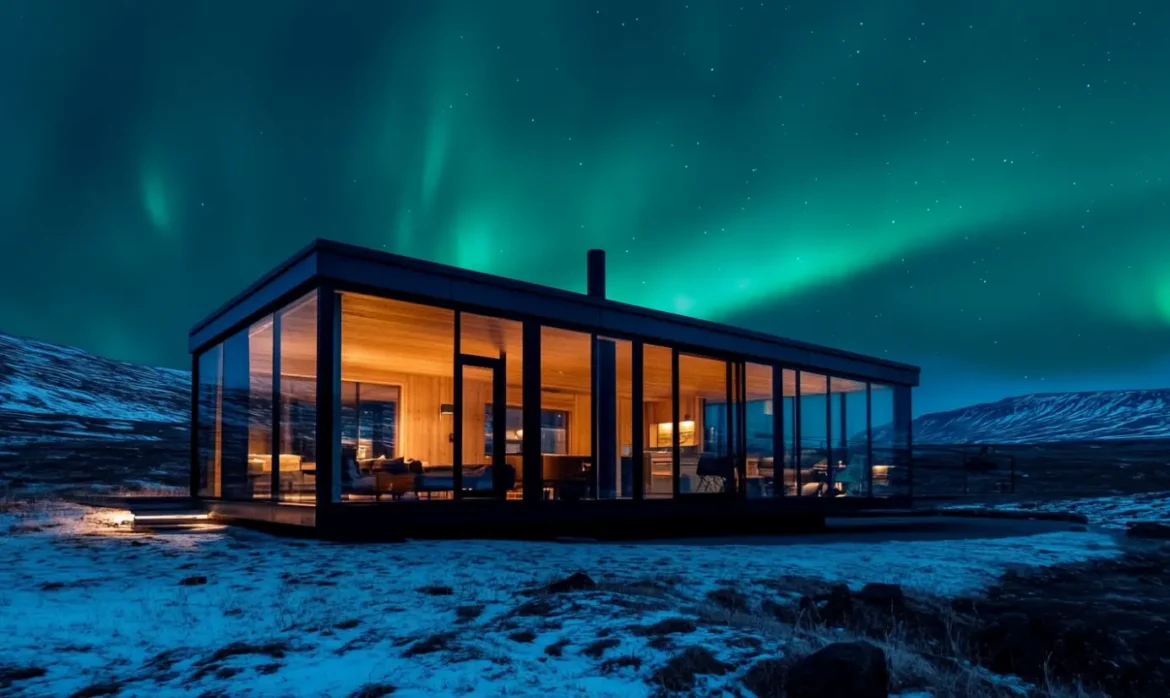I spend about two months a year in Europe. And if there’s one natural wonder I’ll never get tired of, it’s the northern lights. I’ve watched them dance above Arctic beaches in Norway, flicker across frozen forests in Finnish Lapland, and ripple over Iceland’s black sand deserts. Europe has no shortage of aurora hotspots, but the magic really kicks in when you know where to go and when. This year is peak solar activity, so you’re more likely to see them now more than ever!
After years of trial and (frostbite-level) error, I’ve narrowed it down to my 12 favorite places to catch the aurora borealis between 2025 and 2026. Some are classic crowd-pleasers, others are secret spots that up until now, I’ve only shared with close friends. If you’re into cozy cabins, remote wilderness, and European old towns, there’s a spot on this list with your name on it.
The 12 Best Northern Lights Spots in Europe At a Glance
Excited to see the Aurora this winter? Here’s a snapshot of my favorite spots to see them throughout Europe. I will cover each destination in more detail below, providing some helpful tips along the way.
- Best for First-Timers: Tromsø, Norway
- Clearest Skies: Abisko, Sweden
- Best Urban Spot: Reykjavik, Iceland
- Most Remote: Svalbard, Norway
- Best for Family Fun: Rovaniemi, Finland
- Best Photography Spot: The Lofoten Islands, Norway
- Most Iconic Landmark: Kirkjufell, Iceland
- Largest City Above the Arctic Circle: Murmansk, Russia
- Best for Cultural Experiences: Inari, Finland
- Best for Outdoor Adventures: Alta, Norway
- Most Serene: Fair Isle, Scotland
- Best Island Escape: Tórshavn, Faroe Islands

1. Tromsø, Norway
Tromsø is my absolute favorite Northern Lights destination, and for good reason. Situated at 69°N within the auroral oval, it offers some of the most reliable aurora viewing from late September through March, with peak activity during the dark polar nights of December and January.
What sets Tromsø apart is its perfect blend of accessibility and authenticity. The city sits on an island connected by dramatic bridges, creating stunning foreground compositions for aurora photography. I love taking the Fjellheisen cable car up Mount Storsteinen. The panoramic views of the city lights below make the aurora displays even more magical.
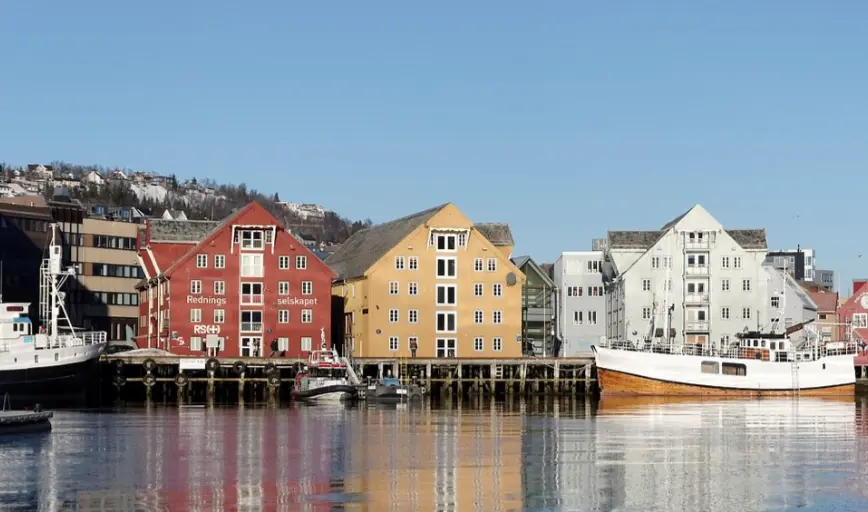
Beyond the lights, Tromsø captivates with its rich Sami culture at the Tromsø Museum, excellent seafood (try the king crab at Fiskekompaniet), and unique accommodations like glass igloos at Lyngen North or the historic Hotel With.
My insider tip: book a husky sledding tour during the day, then stay for their evening aurora camp. Many operators offer combination packages! The Sami guides share incredible stories while you wait for the lights around crackling fires. Also, visit the striking Arctic Cathedral for evening concerts; the building’s glass facade beautifully frames the aurora when they appear overhead. The midnight sun period offers hiking and kayaking under perpetual daylight – Tromsø truly shines year-round.

2. Abisko, Sweden
Looking to experience the beauty of Sweden during Aurora season? Abisko is my ultimate Northern Lights sanctuary, boasting the world’s most reliable clear skies thanks to its unique microclimate. Located in Swedish Lapland, Abisko sits in a rain shadow created by the surrounding mountains, resulting in significantly fewer cloudy nights than anywhere else in the aurora zone.
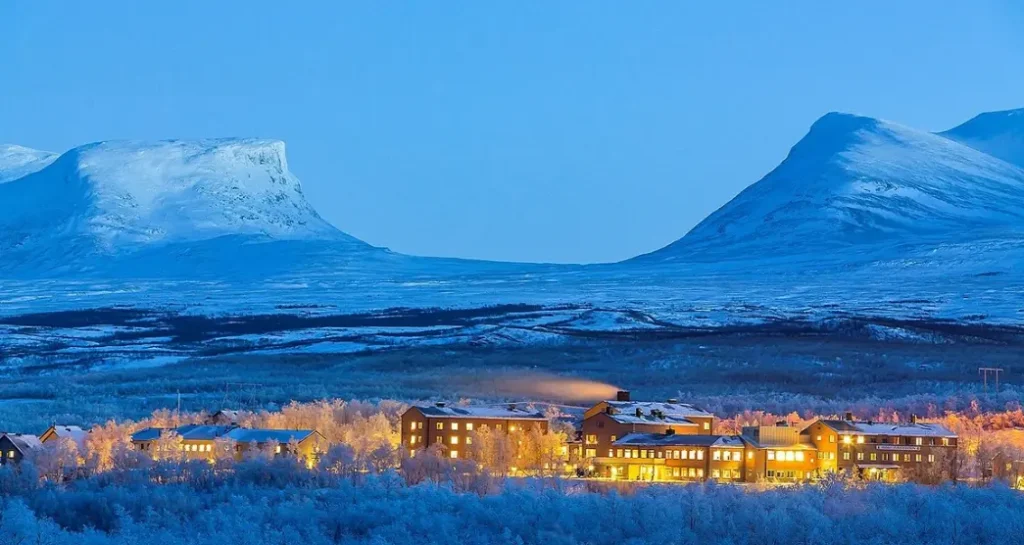
Aurora Sky Station, accessible via the Abisko Chairlift, is the crown jewel. At 900 meters elevation, this mountaintop observatory offers unobstructed 360-degree views away from all light pollution. The aurora season runs from September through March, with peak activity during the darkest months of December and January.
What I really love about Abisko is Torneträsk Lake. This massive frozen expanse creates a natural amphitheater for aurora reflections that’s absolutely breathtaking. During the day, explore Abisko National Park’s pristine wilderness on snowshoes or cross-country skis along the famous Kungsleden Trail.
I recommend booking the evening aurora dinner at Aurora Sky Station. They serve traditional Sami cuisine while you wait for the lights, and the heated viewing areas have blankets and warm drinks. The STF Abisko Turiststation offers authentic mountain lodge accommodations right in the park. The Icehotel in nearby Jukkasjärvi makes for a perfect day trip, combining ice art with reindeer sledding experiences you’ll never forget. It’s truly one of my favorite destinations in Scandinavia!

3. Reykjavik, Iceland
Reykjavik offers the perfect blend of urban comfort and aurora accessibility that I absolutely adore. While many chase the lights in remote locations, Iceland’s capital provides the unique advantage of world-class restaurants, cozy cafes, and vibrant nightlife just minutes from prime viewing spots.
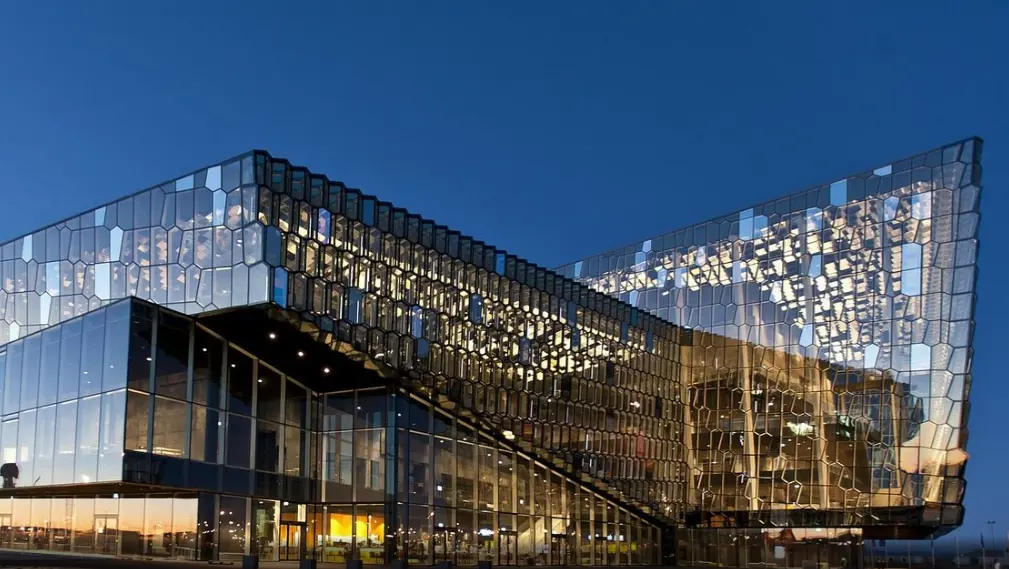
The aurora season runs from September through March, with optimal viewing during the darker months of October through February. What makes Reykjavik special is how quickly you can escape the city lights. Grotta Lighthouse and Seltjarnarnes Peninsula are just 15 minutes from downtown, offering unobstructed northern views over Faxaflói Bay.
My secret weapon is checking the Perlan Observatory’s aurora forecast and heading to Öskjuhlíð Hill when conditions look promising. The elevated position gives you panoramic views while staying surprisingly close to the city center. For the ultimate experience, I book the Northern Lights Center at Perlan during the day to understand the science, then chase the real thing at night. Between aurora hunts, explore the colorful Hallgrímskirkja Church, soak in the Blue Lagoon, or discover Harpa Concert Hall’s stunning architecture. Reykjavik’s geothermal pools like Laugardalslaug offer the perfect way to warm up after cold nights of sky-watching.
Reykjavik at night, especially during aurora season, is such a bucket list experience. The city’s compact size means you’re never far from a hot chocolate and a warm bed. My Pro Tip: I HIGHLY recommend doing one of these Northern Lights tours in Iceland to ensure you see them!

4. Svalbard, Norway
Svalbard represents the ultimate Northern Lights frontier, offering an experience unlike anywhere else on Earth. Located at 78°N, this Norwegian archipelago sits well within the Arctic Circle, providing some of the most reliable aurora viewing anywhere.
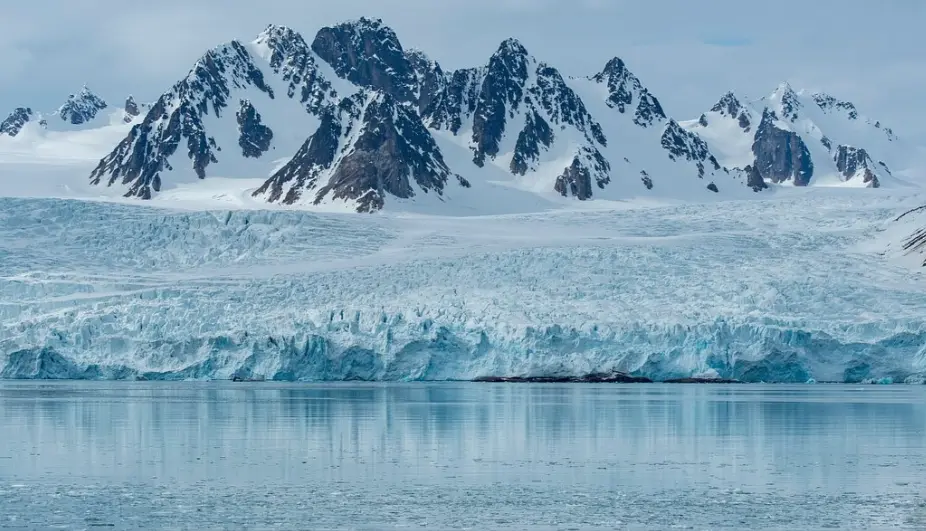
What makes Svalbard extraordinary is the polar night from late October through mid-February, when the sun never rises. This creates a magical blue twilight that perfectly frames the dancing lights above. The complete absence of light pollution in this Arctic wilderness means the aurora appears with stunning intensity against pristine snow and dramatic mountain silhouettes. For these reasons, seeing the northern lights there is among the top attractions in Norway.
Getting there requires flying via Oslo or Tromsø to Longyearbyen, the world’s northernmost settlement. The logistics are part of the adventure. Longyearbyen itself feels otherworldly, where polar bears outnumber residents and it’s illegal to die due to permafrost preservation. I recommend checking out the official Visit Svalbard website for more details!
Beyond aurora hunting, Svalbard offers unparalleled Arctic experiences. Snowmobile expeditions across frozen fjords, dog sledding through endless white landscapes, and visits to the fascinating Global Seed Vault create memories that last lifetimes. The Svalbard Museum provides incredible insights into polar exploration history.
My secret tip: book accommodation at Basecamp Explorer for their aurora wake-up service. Their guides know exactly when and where to catch the lights dancing over the Arctic Ocean. The isolation makes every aurora display feel deeply personal and profound.
- Read also: The Most Scenic Places I’ve Seen in Norway

5. Rovaniemi, Finland
Rovaniemi is the official hometown of Santa Claus and the gateway to Finnish Lapland. For me, this makes it perhaps the most magical Northern Lights destination on Earth. Located precisely on the Arctic Circle at 66°33’N, this vibrant city serves as Finland’s northernmost regional capital and your perfect base for aurora adventures.
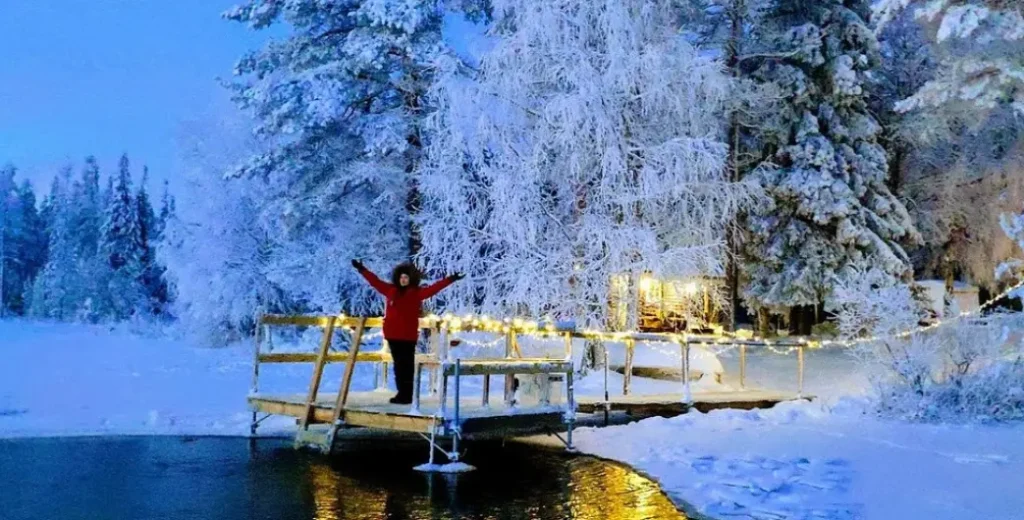
What captivates me about Rovaniemi is how seamlessly it blends Christmas magic with serious aurora science. The Arktikum Science Museum houses the Arctic Centre, where researchers study the very phenomena you’re witnessing overhead. The aurora season runs from late August through April, with peak activity during the darkest months of December and January.
As one of the most livable places in Finland, Rovaniemi sits along the Kemijoki River in central Finnish Lapland. It’s accessible by direct flights from Helsinki or scenic train journeys aboard the overnight Santa Claus Express. The city’s compact size makes everything walkable, from reindeer farms to husky kennels.
Beyond the lights, Rovaniemi offers authentic Sami cultural experiences, visits to Santa Claus Village on the actual Arctic Circle line, and thrilling reindeer sledding through snow-laden forests. The Ranua Wildlife Park showcases Arctic animals including polar bears and lynx.
My insider recommendation: stay at the Arctic TreeHouse Hotel for floor-to-ceiling windows facing north, or book a glass igloo at Kakslauttanen Arctic Resort just outside the city. The Lainio Snow Village creates stunning ice architecture that changes yearly, providing dramatic foregrounds for aurora photography.

6. The Lofoten Islands, Norway
Lofoten Islands offer the most dramatic Northern Lights backdrop I’ve ever experienced. This Norwegian archipelago stretches into the Norwegian Sea above the Arctic Circle, where jagged peaks plunge directly into dark waters, creating mirror-perfect aurora reflections. I love the Norwegian fjords and let tell tell you: this is one of the most scenic areas imaginable!
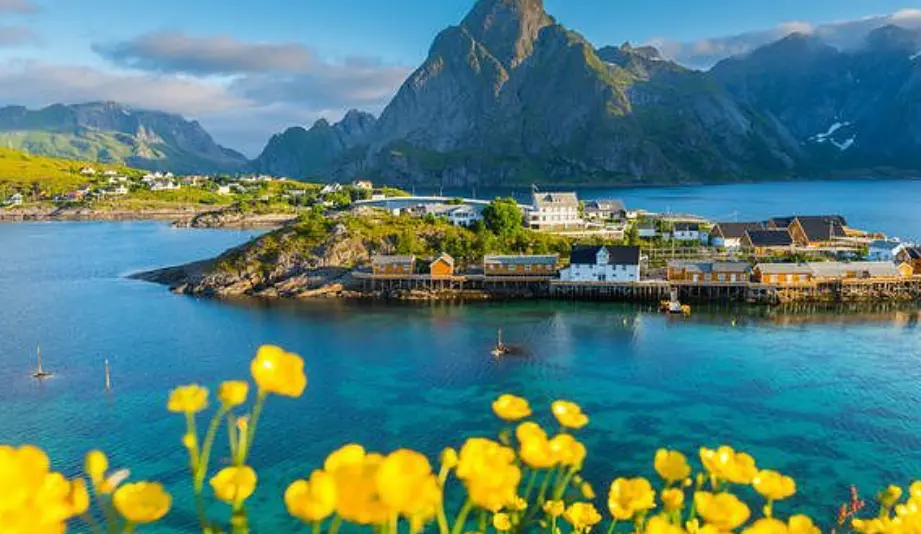
Located in Nordland County, Lofoten sits at 68°N, accessible by flying into Bodø then taking the scenic ferry, or driving the spectacular E10 highway that connects all the main islands via bridges and tunnels. The contrast is breathtaking: towering mountains, pristine beaches, and traditional red fishermen’s cabins called rorbuer.
The aurora season runs September through March, but Lofoten’s coastal climate means clearer skies than many inland locations. What makes this place special is the dramatic landscape. When the lights appear over peaks like Reine or Hamnøy, they’re reflected in both the sea and countless lakes below.
Stay in authentic rorbuer at Reine Rorbuer or Eliassen Rorbuer for that authentic fisherman’s cabin experience with modern comfort. The villages of Reine, Nusfjord, and Å provide incredible foreground subjects for photography. Plus, you have some of the nicest Airbnbs in Europe in the surrounding areas.
During the day, explore the Lofotr Viking Museum in Borg or take boat trips to spot sea eagles and whales. For a dose of adventure, try kayaking through the fjords with Lofoten Aktiv. I recommend checking out the Lofoten Stockfish Museum in Å explains the islands’ fascinating cod-drying tradition that’s lasted 1,000 years.

7. Kirkjufell, Iceland
Looking for another beautiful spot in Iceland? Kirkjufell is hands down my favorite Northern Lights photography spot in the world, and after three visits, I keep returning for good reason. This iconic 463-meter mountain on Iceland’s Snæfellsnes Peninsula has become synonymous with aurora photography, and for good reason.
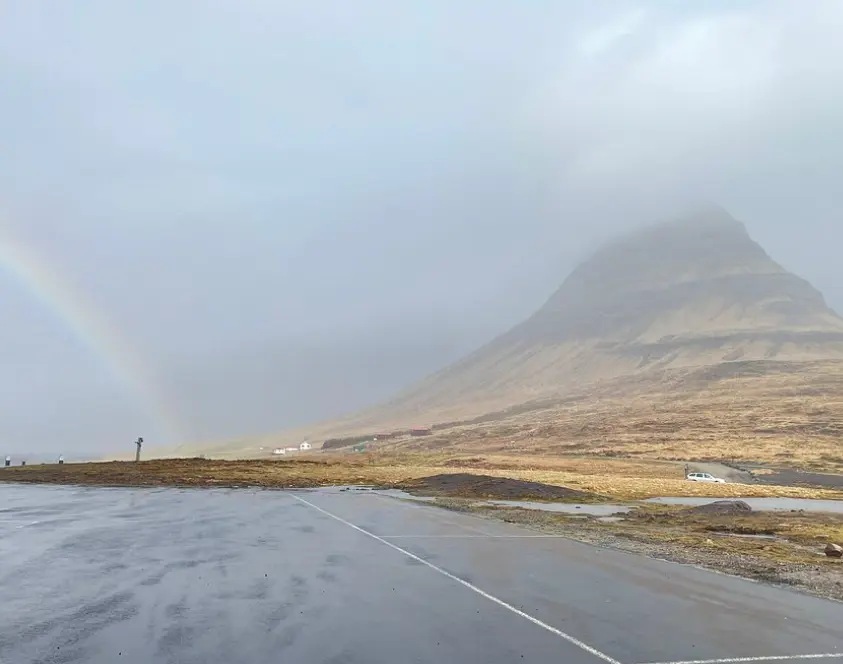
Located just outside Grundarfjörður town, about 2.5 hours north of Reykjavik, Kirkjufell translates to “Church Mountain” for its distinctive pointed shape. The drive along Route 54 through Borgarnes and around Snæfellsnes is spectacular, with the mountain visible from kilometers away. It’s absolute a must-see on my Iceland road trip itinerary.
What makes Kirkjufell magical is Kirkjufellsfoss waterfall directly across the road. This creates the perfect foreground for aurora shots, with the triangular mountain peak framing the lights above. I’ve photographed here in every season, but winter nights when the falls partially freeze and aurora dance overhead are absolutely mesmerizing.
Grundarfjörður offers several accommodation options. Hotel Fransiskus provides comfortable rooms with mountain views, while Kirkjufell Guesthouse puts you right at the base. For luxury, Hotel Búdir is 30 minutes away on Snæfellsnes’ south coast. I recommend checking out these Airbnbs in Iceland seeing what’s available on your preferred dates.
The area offers incredible day activities too. Snæfellsjökull National Park features the glacier-capped volcano from Jules Verne’s “Journey to the Center of the Earth.” Djúpalónssandur black beach and Arnarstapi coastal cliffs provide dramatic landscapes. The entire Snæfellsnes Peninsula feels like miniature Iceland, packed with every landscape type the country offers.

8. Murmansk, Russia
Murmansk stands as Russia’s Arctic gateway and one of the world’s premier aurora viewing destinations. Located on the Kola Peninsula above the Arctic Circle, just across the border from Finland, this port city offers something truly special. The Northern Lights dance overhead from September through March, with peak viewing during the polar night period from December to January when darkness reigns for weeks.
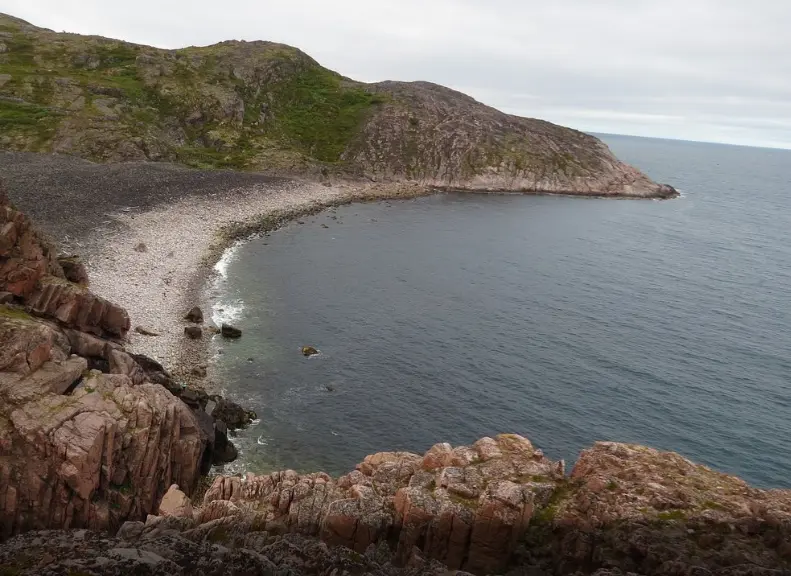
What sets Murmansk apart is its unique combination of urban amenities and pristine wilderness access. Interestingly, I just found out that it’s the world’s largest city north of the Arctic Circle with over 270,000 people! The city’s location at 68°N puts you directly in the auroral oval’s sweet spot. The nearby Khibiny Mountains provide stunning backdrops for photography, and you can easily escape to darker rural areas within an hour’s drive.
Beyond aurora hunting, Murmansk captivates with its maritime heritage. Visit the impressive Lenin nuclear icebreaker museum, explore the dramatic Alyosha monument overlooking the city, and experience authentic Russian Arctic culture. The regional cuisine features incredible fresh seafood, particularly king crab and Arctic char.
I recommend staying at the Aurora Village glamping site about 30 minutes outside the city for heated glass igloos with perfect aurora views. The combo of reliable aurora activity, rich culture, and true Arctic adventure makes Murmansk absolutely one of the prettiest spots in Russia.

9. Inari, Finland
Inari is where I fell in love with the aurora game. This tiny Sami village in Finnish Lapland is one of Europe’s most reliable Northern Lights spots. The magic happens from late August through April, but October through March delivers the real show when you get those crisp, clear nights that make the aurora explode across the sky.
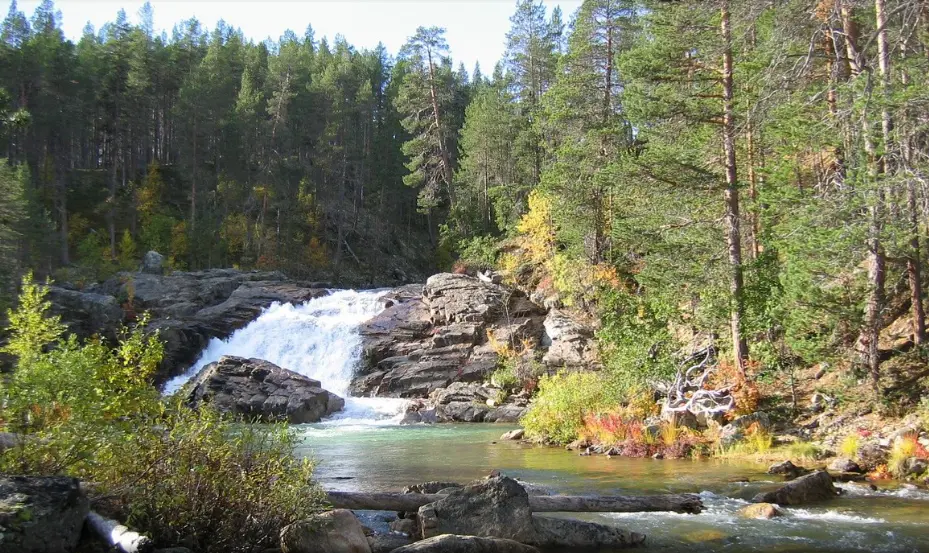
What makes Inari special isn’t just the lights. It’s the authentic Sami culture that most tourists completely miss. The Sami Museum is run by actual Sami people sharing their living traditions. You’ll learn about reindeer herding, traditional handicrafts, and how indigenous communities read the Arctic sky.
Lake Inari is absolutely massive – Finland’s third largest – and provides perfect dark water reflections for aurora photography. Rent a lakeside cabin through Inarin Porotilojen for unobstructed views and zero light pollution. The local secret? Ukko restaurant serves incredible reindeer prepared traditional Sami style, plus they’ll call you when aurora activity spikes.
Skip the overpriced glass igloos elsewhere. Wilderness Hotel Inari‘s aurora alarm system wakes guests for displays, and their snowshoe aurora walks beat crowded bus tours every time. The Pielpajärvi Wilderness Church, a 10-minute hike from town, offers ethereal aurora shots with this tiny wooden chapel silhouetted against the dancing lights.
- You May Also Like: My Guide on the Prettiest Places in Lapland

10. Alta, Norway
Alta earned its nickname “City of the Northern Lights” for good reason – it sits directly under the auroral oval at 70°N with some of Europe’s clearest skies. September through March delivers consistent shows, but November through February offers the deepest darkness and most reliable displays.

The Northern Lights Observatory is your essential first stop. Unlike tourist traps elsewhere, this facility provides real scientific insights into aurora forecasting and optimal viewing conditions. The adjacent Northern Lights Cathedral creates dramatic foreground shots with its angular architecture.
Alta excels at combining aurora hunting with legitimate cultural experiences. The Alta Museum houses 6,000-year-old rock carvings – actual UNESCO World Heritage petroglyphs that connect you to ancient Arctic peoples. These aren’t replicas or tourist displays.
For aurora viewing, skip the crowded tours. GLØD Explorer runs small-group expeditions to remote locations with minimal light pollution, plus they teach actual photography techniques instead of just pointing cameras skyward. Holmen Husky Lodge offers nighttime dog sledding under the aurora – the silence of the snowy landscape amplifies the experience dramatically. I’ll never forget the moment our guide stopped the sleds in complete silence as green curtains erupted directly overhead. The only sounds being happy husky panting and my camera shutter clicking frantically!
The Sorrisniva Igloo Hotel rebuilds entirely each winter with new ice sculptures and themed rooms. Their aurora wake-up service actually works, unlike many competitors. I recommend booking their ice bar for evening drinks while watching the sky. Heated reindeer skins keep you warm while aurora activity builds overhead.

11. Fair Isle, Scotland
Fair Isle is Scotland’s ultimate hidden gem in Scotland for Northern Lights viewing, sitting halfway between Orkney and Shetland – about 200 miles north of Edinburgh. This remote island, home to just 55 residents, offers what most Scottish aurora chasers never experience: complete darkness and unobstructed 360-degree sky views.
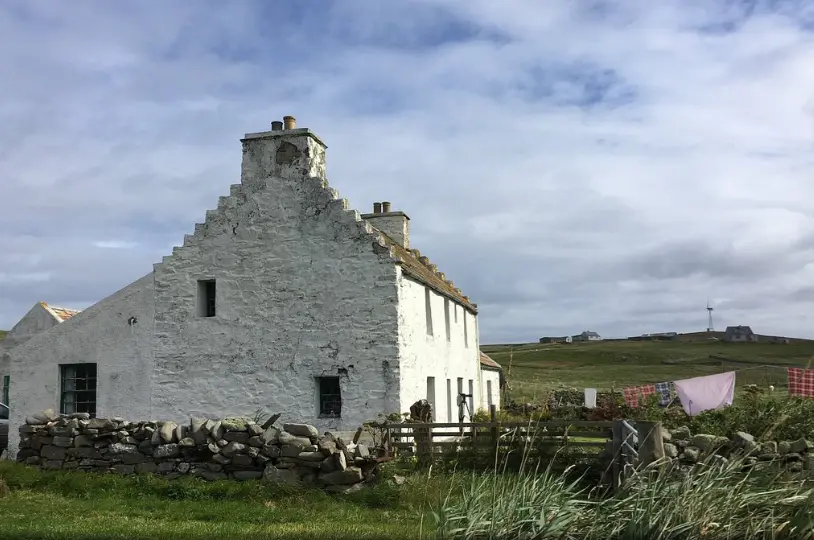
The aurora season runs September through March, but Fair Isle’s magic happens during October through February when Atlantic storms clear to reveal pristine night skies. What makes this one of the prettiest locations in Scotland isn’t just the lights – it’s watching them dance over dramatic sea cliffs, traditional crofts, and the island’s famous lighthouse.
Stay at the Fair Isle Lodge & Bird Observatory, where ornithologists double as aurora spotters and will wake you for displays. The observatory’s location on the island’s highest point provides incredible vantage points. During the day, explore the Fair Isle Craft Centre where locals still knit traditional patterns made famous worldwide.
Getting here requires planning – flights from Tingwall Airport in Shetland operate twice weekly, weather permitting. The Good Shepherd IV ferry runs from Grutness but only in summer. Book accommodations months ahead…the lodge fills quickly with birders and aurora photographers who’ve discovered this secret. I always tell people to bring cash…there’s no ATM, and the island’s shop operates on trust. The isolation that makes Fair Isle challenging to reach creates the perfect aurora sanctuary.

12. Tórshavn, Faroe Islands
Tórshavn is one of my favorite hidden gems in Europe for its absolutely breathtaking nature and sea cliffs. And here’s why it’s a surprisingly great northern lights spot in Europe that nobody talks about. The Faroe Islands capital sits at 62°N – technically just below the typical aurora zone. But its position between Iceland and Norway creates a perfect storm during high solar activity periods from October through March.
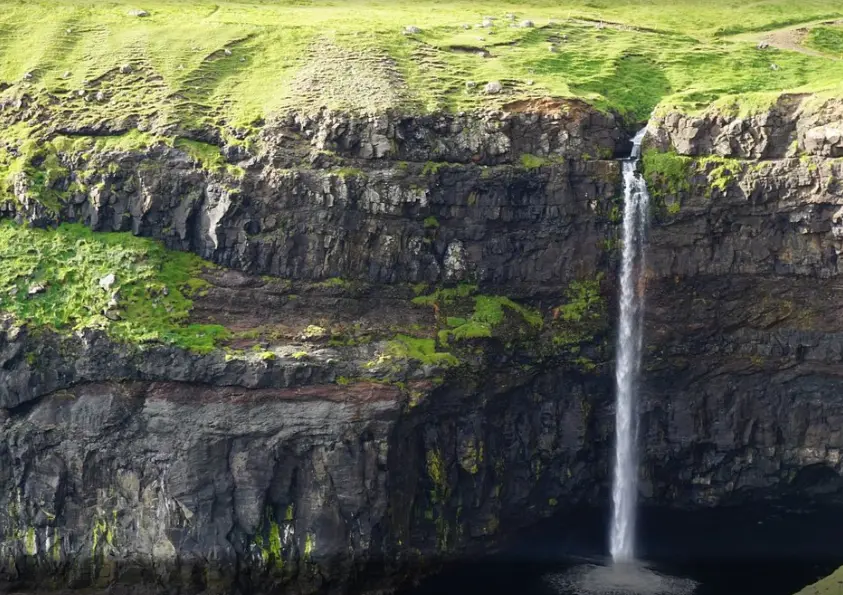
Tórshavn is an awesome aurora viewing spot due to its dramatic Nordic landscape combined with zero light pollution once you step outside the tiny city center. The colorful grass-roof houses of Tinganes, the old town peninsula, create incredible foreground compositions when aurora activity reaches this far south. I’ve watched green curtains dance over the harbor while sitting in Paname Café, probably the coziest spot to wait out cloudy nights.

The Faroe Islands’ unpredictable weather actually works in your favor. When storms clear, you get crystal-clear skies that amplify even moderate aurora displays. Kirkjubøur, a 20-minute drive south, offers darker skies and the haunting ruins of Magnus Cathedral as dramatic silhouettes.
Stay at Hotel Føroyar for harbor views, or rent an Airbnb in Tinganes for authentic charm. Koks, the world’s most remote Michelin-starred restaurant, serves incredible Faroese cuisine – book months ahead. Download the Aurora app and set alerts for KP3+ activity. When Tórshavn gets aurora, it’s typically spectacular because clear skies here are rare and precious.
- Read my guide: My Favorite Airbnbs for Seeing the Northern Lights in 2026



